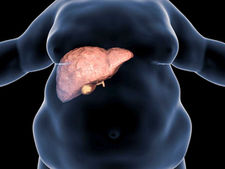
Gynecological Cancer Surgeries
What is Uterine Cancer?
Womb (uterine) cancer is called uterine cancer when cancer begins in the uterine area. In women who have entered menopause, its incidence increases with the end of the menstrual period. It is also called endometrial cancer. There are some tests that need to be performed to make the diagnosis. A biopsy is performed by taking tissue from the endometrium, that is, the inner lining of the uterus. Diagnosis is made according to the biopsy report sent to pathology. Pathological examination can also be performed by removing tissue using methods such as dilation or curettage. Another diagnostic method is hysteroscopy. Examinations are performed by hysteroscopy, that is, by entering the uterus from the vaginal area with the help of a device. For the diagnosis of uterine cancer, it is recommended that women, especially after a certain age, have a gynecological examination every year. Again, excess weight can be seen as a risk factor for uterine cancer. Losing weight and eating healthy and regularly can be stated as one of the methods of protection.
What are the symptoms of uterine cancer?
Unusual menstrual bleeding, Vaginal bleeding after menopause, Differences in vaginal discharge, Pain during sexual intercourse, Blood in the urine
What is Cervical Cancer (Cervix)?
The cervix area is the area between the end of the vaginal line and the uterus. Cervical cancer is diagnosed if cancerous cells form in the cervix area. Treatment methods for cervical cancer are radiation, chemotherapy and/or surgery. Ovarian cancer (ovarian) is a disease that occurs due to the formation of cancerous cells in the ovaries of women. Treatment of cancerous cells occurring in the ovaries in the pelvic area is mostly done with chemotherapy and surgery. Tubal cancer (tuba uterina), unlike ovarian cancer, is the formation of cancerous cells in the fallopian tubes (pelvic area). Fallopian tubes are located at the point connecting the ovaries to the uterus and establish the connection between them. Vaginal bleeding may present with symptoms such as blood in vaginal discharge. As with ovarian cancer, its treatment is performed by surgery or chemotherapy. Treatment of Uterine Cancer: Hysterectomy is performed for uterine cancer and the patient's uterus is removed with open or closed surgery. The doctor decides according to the patient's condition or the spread of the cancer. Radiotherapy, chemotherapy or hormonal treatment may be carried out by the doctor depending on the situation. Radiotherapy: Radiotherapy is applied after the surgery, depending on the suitability of the cancerous area and its treatability with radiation. It is a method that can be used for endometrial cancers. Radiotherapy is used to prevent the disease from recurring after surgery. If the patient's health condition is not suitable for a hysterectomy or similar major surgery, radiotherapy may be applied as the main treatment method. Chemotherapy: Chemotherapy is the process of killing cancer cells using chemicals. Chemotherapy can be done in different ways. Intravenous chemotherapy is the administration of chemicals to the patient through a vein. Oral chemotherapy is the use of chemotherapy pills by the patient. The treatment process can also be carried out in a mixed manner using both. Chemotherapy treatment has some side effects. Feeling sick and tired, hair loss, itchy skin, diarrhea or constipation, etc. complications may develop. Hormone therapy: Hormone treatments are given to slow the growth of cancerous cells. Endocrine (hormone) treatments are also used in the treatment of uterus, cervix or some other types of cancer.
Hormone treatments are performed with two different hormones. Estrogen therapy uses estrogen to slow down cancer. Progesterone therapy uses progestin to slow down cancer. Hormone treatments are also a treatment method used to alleviate the effects of menopause and reduce the weakening of bone structure. Hysterectomy: Hysterectomy is the removal of the uterus through a surgical operation. For women, there is no possibility of menstruation or pregnancy after hysterectomy. In this respect, after other treatment methods have been tried, the final option is to remove the uterus.
Hysterectomy is performed for non-cancerous myomas, heavy and unresolved menstrual bleeding, uterine prolapse, uterine cancers, cervix (cervix) cancers or ovarian cancers. Hysterectomy can be performed by three different methods. Laparoscopic hysterectomy is the procedure of removing the uterus from the upper part of the vagina using a closed method and laparoscopic method. Vaginal hysterectomy is the process of removing the uterus vaginally by making an incision on the upper side of the vagina. In abdominal hysterectomy, the uterus is removed through an incision in the lower abdomen. HPV infection - HPV vaccine: HPV virus, known as a sexually transmitted disease, is a disease that occurs due to infection of the epithelial cells of the human papilloma virus. Since the HPV virus causes cervical cancer, doctors recommend that women take the necessary precautions to protect themselves from the disease by getting the HPV vaccine at certain doses and intervals. For ages 10-12, two doses of HPV vaccine are required at 6 or 12 month intervals. It is a 3-dose HPV vaccine recommended for young people between the ages of 15-25. The most effective periods of the vaccine are the ages of 10-15. However, women up to the age of 45 can receive the HPV vaccine. There are currently no studies on HPV vaccination after the age of 45.
FOR INFORMATION AND APPOINTMENT, YOU CAN LEAVE YOUR NUMBER OR ASK OUR EXPERTS
YOU CAN LEAVE YOUR NUMBER FOR INFORMATION AND APPOINTMENT AND ASK QUESTIONS TO OUR EXPERTS



-04.png)
-06.png)
-05.png)
-08.png)
-07.png)























